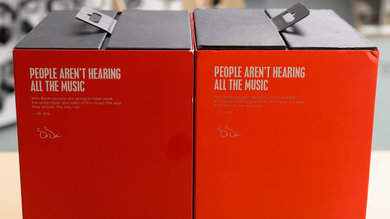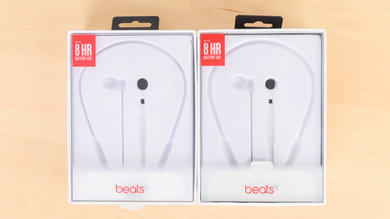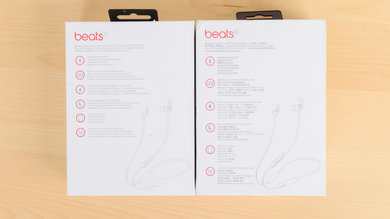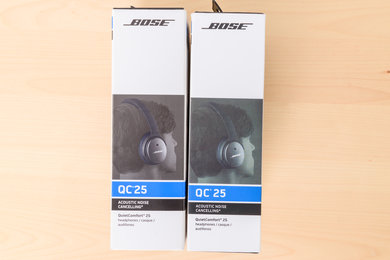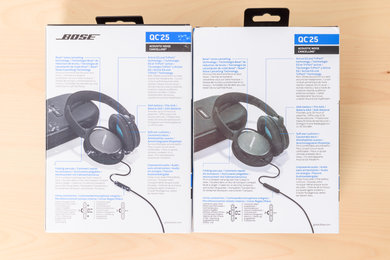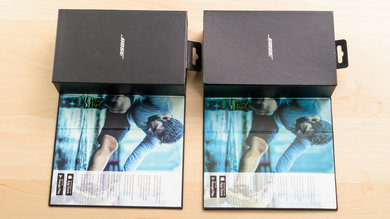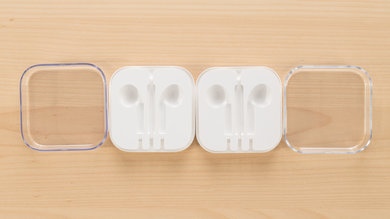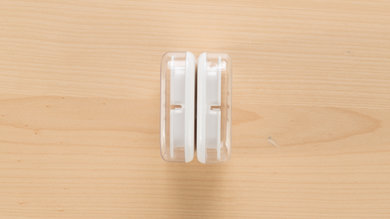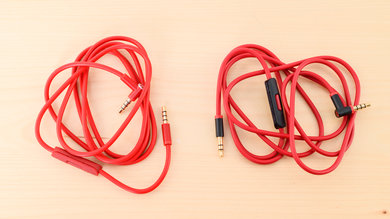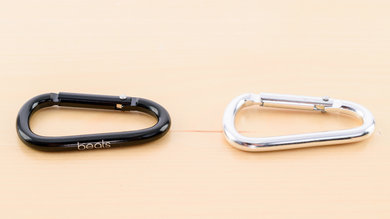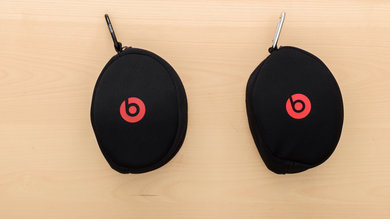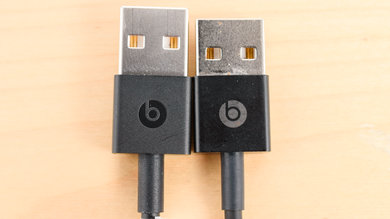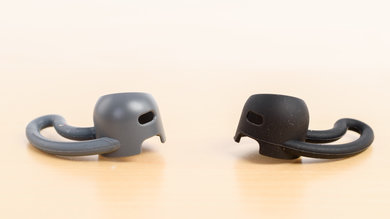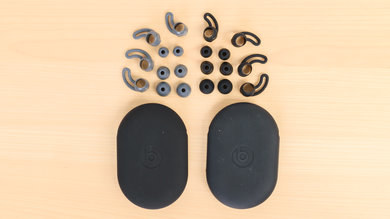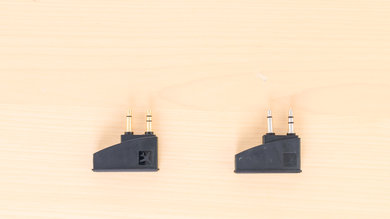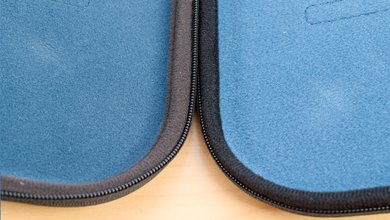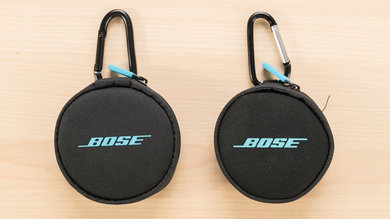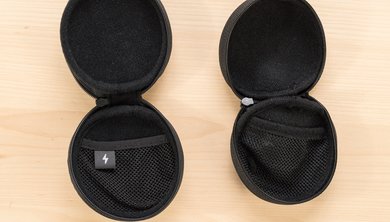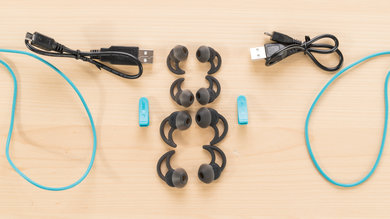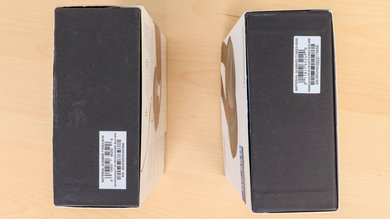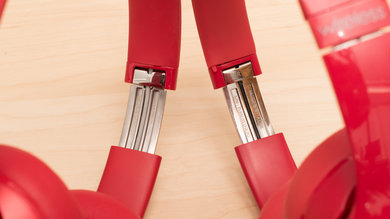- Table of Contents
- Intro
- How to Spot Fake Headphones
- How to Avoid Counterfeits
- Conclusion
- Comments
While it's rare to receive fake headphones when purchasing them from a trusted big-box retailer or directly from the manufacturer, there's still a chance that you may encounter counterfeit products when shopping online or on the street. Sometimes, the differences between the original and the fake can be hard to spot, and other times, there are obvious features that don't match up. If you've been duped by a fake product that doesn't perform as well as what you were hoping for, or if you want to ensure you're always getting the genuine product each time you make a purchase, you'll want to develop the ability to spot differences between knockoffs and the real deal.
In our Real vs Fake Headphones article, we compared the performance of five different headphones with their counterfeit counterparts. After thorough analysis, we concluded that the original, real headphones performed better in design, sound quality, and active features. However, you may not be able to get a feel for their performance until you've purchased and unboxed your headphones. The quality of the imitation product can also depend on price, although paying more for a counterfeit doesn't necessarily ensure a better-performing product. Luckily, if you want to know if you're getting a genuine product or a dupe, there are some reoccurring flaws that you can check. Keep in mind that fake products try to look as close to the genuine product as possible, and differences can be hard to spot, especially if you don't have the original reference handy.
Comparing Fake And Real Headphones
In this article, we'll compare the same five sets of headphones from our Real vs Fake Headphones article: the Beats Solo2 Wireless, the Beats BeatsX Wireless, the Bose QuietComfort 25/QC25, the Bose SoundSport Wireless, and the Apple EarPods. At the time of purchasing, these headphones were popular and found at most retailers. Although some of them may not be available on the market anymore, the comparisons made here can still provide helpful guidance for spotting fake products.
We'll cover the most obvious signs of a counterfeit product that you can spot by sight. This includes how the headphones are packaged, the accessories included in the box, and their serial number. However, we won't cover more thorough tests such as their frequency response or noise isolation capabilities. If you're wondering how fake headphones perform compared to the original, real products, you can check out our article here.
Packaging
The differences in packaging are most noticeable when comparing them side by side. Before you even get to the packaging, make sure to inspect the shrink-wrap or clear plastic wrap, if there is any. On real products, the shrink-wrapping is usually tight and smooth. In comparison, some fake products have shrink-wrapping that looks loose or has holes or other irregularities.
On the actual box or packaging of a product, a couple of signs will indicate a counterfeit product. If the colors seem a bit off or faded on a brand new box, then they're most likely fakes. You'll also want to check out the text on the box: spelling mistakes are often a most visible marker of a fake product. Sometimes, you can also look at the spacing or visibility of the text, as well as if there's text missing, to get a better indication of whether a product is genuine or not. However, note that some products have different packaging depending on the market, so packaging may be a less reliable or more difficult-to-use method, especially if you don't have the real product to compare it to.
As you can see in the picture above, the real Beats Solo2 have a much deeper red color than the knockoff. The color and font of the written text on the front, side, and back are also much more legible on the real packaging than on the fake.
The Beats X are a bit harder to tell apart since the box has a transparent cover and is mostly white. However, the product specifications on the back of the box aren't translated in the same language, and the text's spacing is a little different. Unfortunately, the difference in translation (which affects the spacing) can also be attributed to different markets, so it won't be a reliable way to tell the fake BeatsX from the real ones.
The real QuietComfort25 are a bit more obvious to distinguish from the fake due to the slight discoloration of the knockoff box. Like the Beats Solo2, the faded color of the box is more noticeable if you have both the real and fake side by side. However, if you look closely at the back of the fake Bose's box, you can see that some text is cropped out, while all the text is legible on the real box.
The Fake Bose SoundSport's box is also slightly off-color when compared to the original. It's not very noticeable, though, and resembles the slight discoloration that you would get if you left the box out in the sun. However, inside the box, you can see that the promotional image of the fake is of much lower quality than the original. For example, you can see fine details like the athletes' hair on the real box, while the fake seems a little blurry and washed out. Also, the text font and format inside the fake box differs from the real packaging, whereas the font on the outer cover doesn't.
The Apple EarPods are very hard to tell apart using the product packaging alone. Only the slight blue tint of the plastic cover indicates that there's a difference between both headphones. However, this can be very hard to spot.
Accessories
Since it can be hard to distinguish real headphones from their fakes by packaging alone, if you get the chance, open the box and have a look at the accessories. In most cases, the provided accessories for the fake headphones are of lower quality. They also may be a different color that doesn't match the original headphones' color and packaging theme.
The fake Beats Solo2 have obvious noticeable differences in their packaging compared to the original. The original cable is completely red, which matches the color scheme of the headphones. In comparison, the fake has some black accents that are more reminiscent of old Beats cable models. The fake also comes with a silver carabiner hook instead of a black one, and it's missing the Beats logo. Finally, the fake's carrying pouch is a slightly different, possibly lower quality fabric, which also feels different.
The difference is very visible when we compare the original BeatsX to the fake ones. The real headphones have a grey audio cable and a black brand logo etched on the cable's USB connector. The ear tips and stability tips are also grey. However, the fake's USB connector is shorter, black colored instead of grey, and the brand logo is only printed on with grey ink. The fake's carrying case is also a bit lighter than the original's black case.
In comparison, the fake Bose QuietComfort 25 match the real headphones pretty closely. Like most of the fake headphones in this comparison, the colors and texture of the fake accessories are slightly off.
As you can see in the pictures above, the airline adapter for the fake headphones isn't gold-plated like that of the original's, which is easily noticeable without a side-by-side comparison. The interior of the fake protective case also has a lighter blue material coating, while the trim is a deeper shade of black. Externally, the fake case has a blue zipper handle, unlike the black one used by the original. However, without the real QC25 in hand, these details can be hard to notice.
Most of the accessories of the fake SoundSport are as good as the original. The fake's carrying pouch is a little smaller than the original, though, and doesn't have the charging logo on the inside pocket, but feels the same in hand. The most noticeable difference is the carabiner hook. The fake hook is two-tone black and grey instead of the all-black theme of the real one.
Lastly, the EarPods do not have any accessories apart from their carrying case, which, as stated in the packaging section of this article, is very difficult to tell apart unless you're looking at the real and the fake side by side.
Serial Numbers
The most trustworthy way to identify fake products is to check the serial number. You can also try to register the headphones with the manufacturer or retailer. Not all manufacturers or retailers give you this option, but if you can find a serial number, always register the headphones to confirm that your headphones are new and unused. The serial number is often on the box, but in some cases, it can be hidden on the headphones themselves, as shown in the pictures below.
Here's a table of all the serial numbers of the headphones we tested for this article. Each of the genuine headphones have a serial number that passes verification. However, all of the fake headphones fail verification. Note that there isn't a way to verify the authenticity of the Apple EarPods' serial number.
| Serial Numbers | Real | Verified | Fake | Verified |
|---|---|---|---|---|
| Beats Solo2 Wireless | FL6RV6Y6G8PP | Passed | FL6SL0S1HK2O AA111E4N0J3M* |
Failed |
| Beats BeatsX | FTRTCDASHDQV | Passed | FTRT41EZH18W FTTTGG95H18V* |
Failed |
| Bose QuietComfort 25 | 065252Z52410475AE | Passed | 065249288291756AE | Failed |
| Bose SoundSport Wireless | 073134261160109AE | Passed | 073134261630781AE | Failed |
| Apple EarPods | DTY61444DSD | - | DTYR8P6246HY | - |
*For the fake Beats headphones in this comparison, we noticed that the serial number on the box didn't match the serial number on the headphones. This isn't the case for the real Beats models. This means that if you do get the chance to compare the serial numbers before purchase, you can easily find out if the headphones are fake.
How To Avoid Buying Counterfeits
Buy from verified and authorized dealers
An easy way to avoid buying fake or knockoff headphones is to buy directly from the manufacturer or the brand's website. They tend to be a bit pricier than when sold by third-party retailers, but there's also very little chance that they'll be fake. This means if you want to get the Beats Solo2 or the Bose QuietComfort 25, then purchasing them directly from beatsbydre.com or bose.com will guarantee authenticity.
However, there are quite a few verified dealers and retailers, so here are some of our recommendations for purchasing the real headphones used in this comparison.
Authorized Dealers:
- bose.com - for all Bose headphones.
- beatsbydre.com - the newly released Beats headphones.
- apple.com - the more recent Beats headphones and all Apple headphones.
- amazon.com* - for most old and new headphones.
- bestbuy.com - for most old and new headphones that you can also pick up in-store.
- bhphotovideo.com - for more recent and new headphones.
- walmart.com - for most old and new headphones that you can also pick up in-store.
*Make sure the headphones are sold and shipped directly by Amazon and not by a third-party seller using Amazon as a platform.
If you have any doubts regarding the authenticity of a product or the trustworthiness of a seller online, make sure to check out user reviews if possible. These reviews can help indicate if you're more at risk of getting a counterfeit product.
Check refund and return policies
This step is somewhat self-explanatory. If you buy from an authorized dealer or directly from the manufacturer/brand, then they'll most likely have a refund or return policy to protect their customers from fraudulent and fake headphones. Always check the return and refund section of websites before making any big purchases.
Price
Lastly, price is often one of the easiest ways to distinguish a knockoff from the real thing. While headphones can go on sale with some deep discounts, if the price seems too good to be true, it probably is. Below are the prices at purchase for the models we compared in this article and the real vs fake headphones one.
| Headphones (price at purchase) |
Real - Price $ (USD) |
Retailer | Fake - Price $ (USD) |
Retailer |
|---|---|---|---|---|
| Beats Solo2 Wireless | 195.00 | Amazon.com | 87.40 | iOffer.com |
| Beats BeatsX | 149.95 | Amazon.com | 42.50 | iOffer.com |
| Bose QuietComfort 25 | 258.84 | Amazon.com | 100.58 | DHgate.com |
| Bose SoundSport Wireless | 172.30 | Amazon.com | 59.54 | DHgate.com |
| Apple EarPods | 35.00 | Apple Store | 9.36 | Amazon.ca |
Always check the actual price of the headphones directly from the manufacturer/brand website, and compare this price with some of the approved sellers. If the headphones are really on sale, this price difference will most likely be widespread and verifiable by cross-checking websites.
Conclusion
It's often difficult to tell the fakes from the real headphones without a side-by-side comparison, especially if you don't get a chance to listen to the headphones before purchase. However, below is a quick summary of the tips to help you spot fakes and knockoffs:
- Check the packaging - the fakes are often faded, worn, or have a slightly different color from the real product. If there's shrink-wrap on the packaging, make sure it's tight on the package and professional-looking, not loose or improperly sealed. Also, check for spelling mistakes or other strange markings.
- Check the content of the box - the fake accessories are often spare parts that don't match the color and theme of the headphones. Make sure that all the accessories are included, including the manual or warranty documents.
- Check or register the serial number - the fakes often have a false S/N or have multiple S/Ns for the same headphones that don't match, which is an obvious red flag.
- Buy directly from the manufacturer/brand or an authorized seller - if you want new, unused headphones, this is the best way to guarantee authenticity as well as a refund or return option, if necessary.
- Lastly, check and compare the price - if it's a sale, it most likely won't be limited to a single retailer, and if the price is too good to be true, then it probably is.

